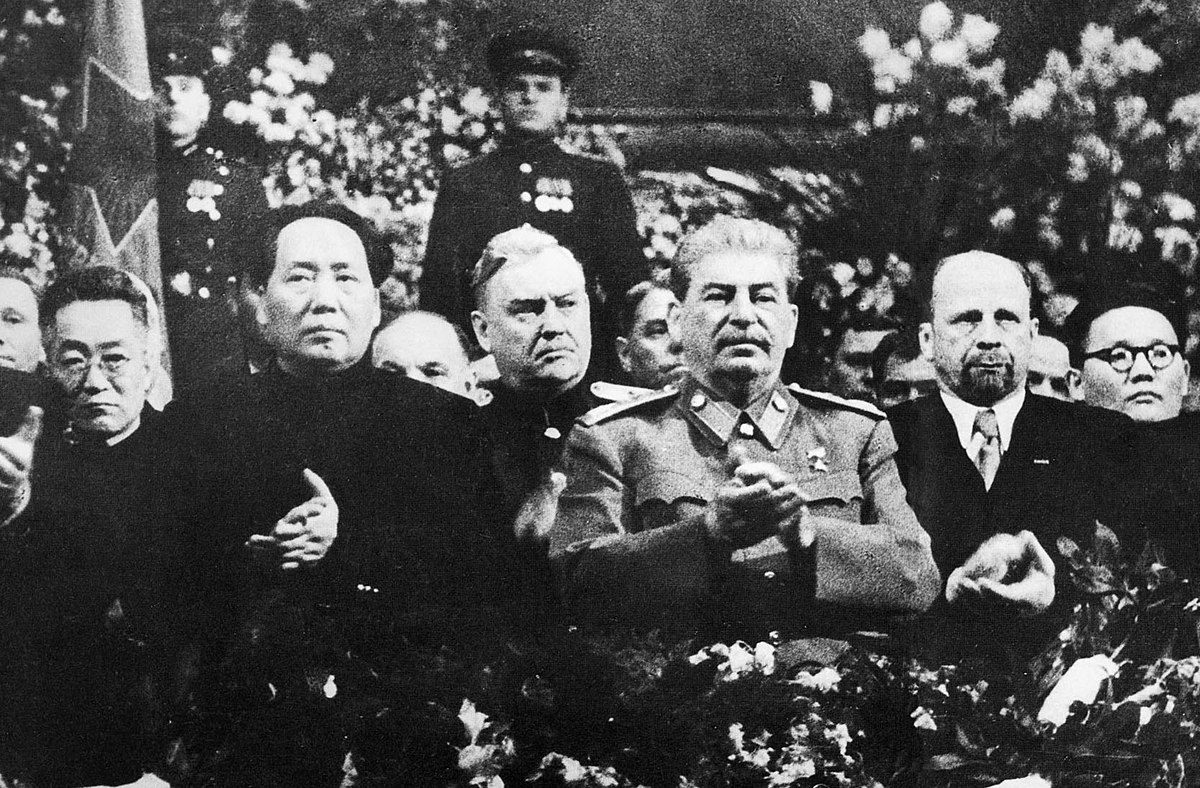
Cold War
RussiaThe Cold War is a term commonly used to refer to a period of geopolitical tension between the United States and the Soviet Union and their respective allies, the Western Bloc and the Eastern Bloc. The term cold war is used because there was no large-scale fighting directly between the two superpowers, but they each supported major regional conflicts known as proxy wars. The conflict was based around the ideological and geopolitical struggle for global influence by these two superpowers, following their temporary alliance and victory against Nazi Germany and Imperial Japan in 1945. Aside from the nuclear arsenal development and conventional military deployment, the struggle for dominance was expressed via indirect means such as psychological warfare, propaganda campaigns, espionage, far-reaching embargoes, rivalry at sports events, and technological competitions such as the Space Race.
The Western Bloc was led by the United States as well as a number of other First World nations that were generally liberal democratic but tied to a network of authoritarian states, most of which were their former colonies. The Eastern Bloc was led by the Soviet Union and its Communist Party, which had an influence across the Second World and was also tied to a network of authoritarian states. The US government supported anti-communist and right-wing governments and uprisings across the world, while the Soviet government funded left-wing parties and revolutions around the world. As nearly all the colonial states achieved independence in the period from 1945 to 1960, they became Third World battlefields in the Cold War.
The first phase of the Cold War began shortly after the end of World War II in 1945. The United States and its allies created the NATO military alliance in 1949 in the apprehension of a Soviet attack and termed their global policy against Soviet influence containment. The Soviet Union formed the Warsaw Pact in 1955 in response to NATO. Major crises of this phase included the 1948–1949 Berlin Blockade, the 1945–1949 Chinese Communist Revolution, the 1950–1953 Korean War, the 1956 Hungarian Revolution, the 1956 Suez Crisis, the 1961 Berlin Crisis, the 1962 Cuban Missile Crisis, and the 1964–1975 Vietnam War. The US and the USSR competed for influence in Latin America, the Middle East, and the decolonizing states of Africa, Asia, and Oceania.
Following the Cuban Missile Crisis, a new phase began that saw the Sino-Soviet split between China and the Soviet Union complicate relations within the Communist sphere leading to a series of border confrontations, while France, a Western Bloc state, began to demand greater autonomy of action. The USSR invaded Czechoslovakia to suppress the 1968 Prague Spring, while the US experienced internal turmoil from the civil rights movement and opposition to the Vietnam War. In the 1960s–1970s, an international peace movement took root among citizens around the world. Movements against nuclear weapons testing and for nuclear disarmament took place, with large anti-war protests. By the 1970s, both sides had started making allowances for peace and security, ushering in a period of détente that saw the Strategic Arms Limitation Talks and the US opening relations with the People's Republic of China as a strategic counterweight to the USSR. A number of self-proclaimed Marxist–Leninist governments were formed in the second half of the 1970s in the Third World, including Angola, Mozambique, Ethiopia, Cambodia, Afghanistan, and Nicaragua.
Détente collapsed at the end of the decade with the beginning of the Soviet–Afghan War in 1979. The early 1980s was another period of elevated tension. The United States increased diplomatic, military, and economic pressures on the Soviet Union, at a time when it was already suffering from economic stagnation. In the mid-1980s, the new Soviet leader Mikhail Gorbachev introduced the liberalizing reforms of glasnost ("openness", c. 1985) and perestroika ("reorganization", 1987) and ended Soviet involvement in Afghanistan in 1989. Pressures for national sovereignty grew stronger in Eastern Europe, and Gorbachev refused to militarily support their governments any longer.
In 1989, the fall of the Iron Curtain after the Pan-European Picnic and a peaceful wave of revolutions (with the exception of Romania and Afghanistan) overthrew almost all communist governments of the Eastern Bloc. The Communist Party of the Soviet Union itself lost control in the country and was banned following an abortive coup attempt in August 1991. This in turn led to the formal dissolution of the USSR in December 1991, the declaration of independence of its constituent republics and the collapse of communist governments across much of Africa and Asia. The United States was left as the world's sole superpower.
